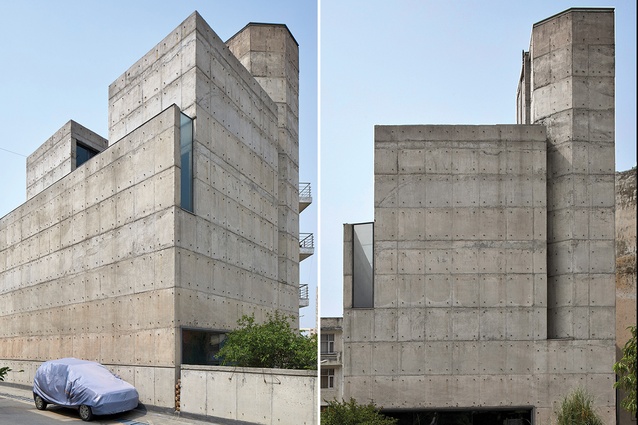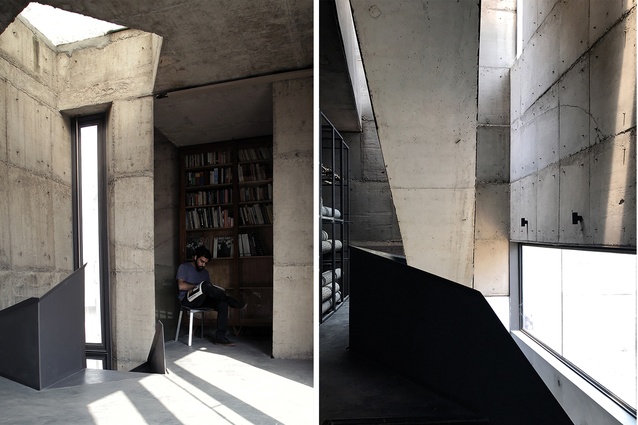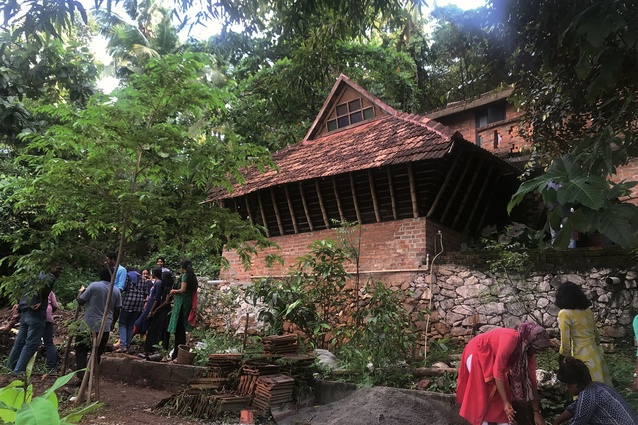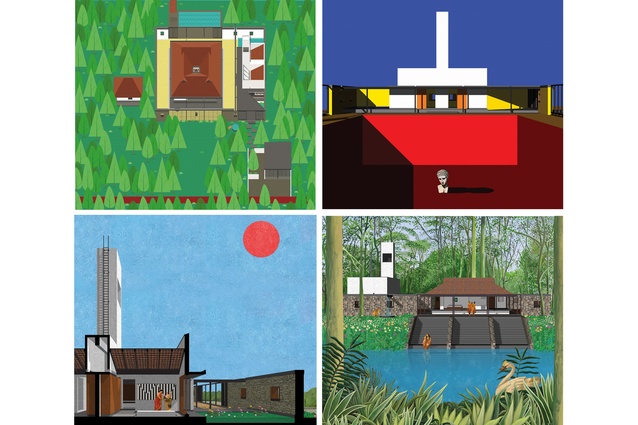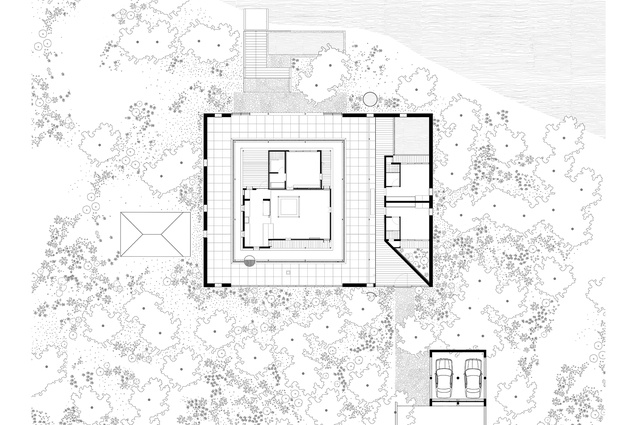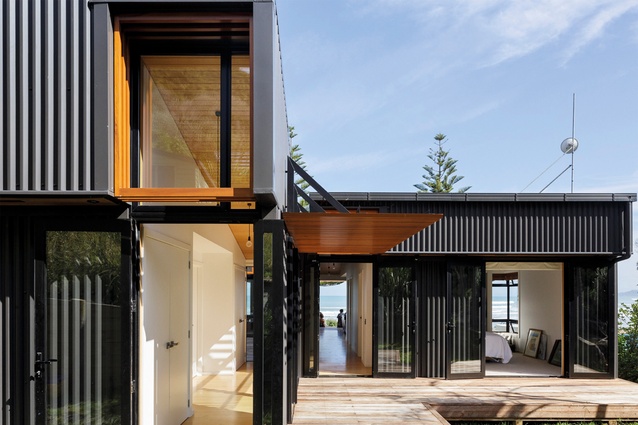Essay from India
Jeremy Smith had a hectic 2019. Hard on the heels of his Essay from America, traversing several United States schools of architecture, he reports from Kerala, India, as international juror and keynote speaker at the Indian Institute of Architects’ National Awards for Excellence in Architecture 2019.
India doesn’t stop; even crossing the street can be quite an adventure. You have to keep moving and trust that vehicles of all sizes and shapes will somehow make room. Pausing in panic threatens to halt an infinite line of traffic. Yet, somehow, everything seems to open and merge around you, for life here has a way of encompassing you within a greater story.
It’s not the chapter book we in New Zealand are used to, more an unfolding encyclopedia. Within all of India’s cultures, languages and people, there exists a warmth and collectivity that opens itself to each other. It might feel perilous trusting that everything will clear but India and its people are very generous. The gap opens, one rickshaw at a time. India has layers rather than boundaries.
There is, of course, a lot of generosity to go around, with India forecast to overtake China as the world’s most populated country in 2027. If America is Grand Central Station and New Zealand the last stop on the subway, as I’ve described them before for Architecture New Zealand,1 then India is surely the whole train set. There’s a lot of coming and going: 1.3 billion and counting. This train is moving, carrying a sense of continuity that is not only invigorating but which makes you think about tempo.
Theirs is a time formed of little moments, where you might do only half what you hope, and then half that again. “That’s why I like to cook lunch in the morning,” it was explained to me. “Having lunch might be all that I finish today.” Having many, many layers makes you think step by step and, while we in New Zealand seem to be just putting down rails, the Indian process of change is already on aged and incremental tracks.
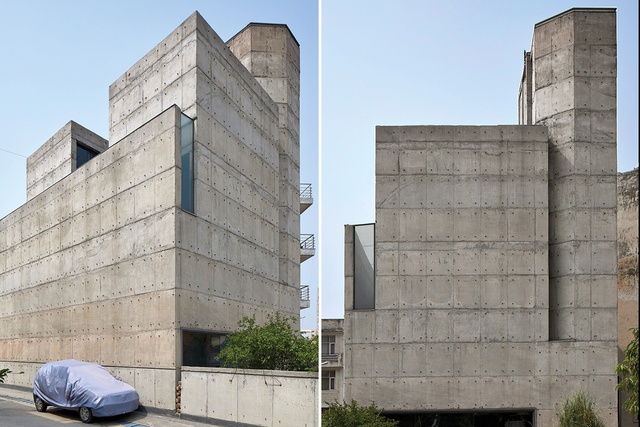
The notion of incremental change interests me. It is what our office investigates with master’s students in the Ch-ch-ch-ch-changes studio at the University of Auckland and what my doctorate chased under the mantra “Being finished is finished”. Yet, while we in New Zealand are just learning not to finish our buildings, India keeps on keeping on. Incremental change is in its literature, its history, its buildings. Think of the complexities and small steps in Arundhati Roy’s The God of Small Things, the perfection of the still-to-be completed Taj Mahal or the 2018 laureate of the Pritzker Architecture Prize, BV Doshi, describing buildings as “living beings”.2 Even time is layered in India.
So, the invitation to be an international juror and keynote speaker at the Indian Institute of Architects’ National Awards for Excellence in Architecture 2019 was as magnificent as was the letterhead. It is addressed to ‘Ar. Jeremy Smith’, for an architect in India has a prefix. No Mr or Mrs here; it’s enough to make you start writing letters. Put simply, it is an opportunity to discuss architecture with some of the clearest thinkers I’ve ever encountered. Doshi isn’t here but these architects are his friends and he’s continually in the conversation: Ar. Neelkanth Chhaya, who is a former head of the Centre for Environmental Planning and Technology (CEPT), the architecture school designed and established in Ahmedabad by Doshi; Ar. Jaimini Mehta, who worked for Louis Kahn and, amongst many seminal books, wrote Louis I. Kahn Architect in 1975 and Rethinking Modernity – Towards Post Rational Architecture in 2011; legendary urban designer and heritage planner Ar. KT Ravindran; and Ar. Durganand Balsavar, who is boundlessly doing so much to unlock the understanding of human settlement in India and whose interviews with Doshi I refer to throughout this essay. I could go on; this is an all-star cast. Amongst all this wisdom, I find a consistency to the thinking but also a shared concern.
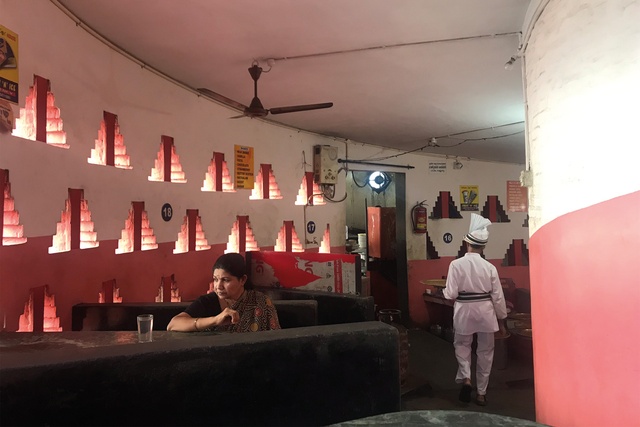
India is so big and busy that it would take years to drive around visiting each project as I so enjoyed doing as part of Pete Bossley’s NZIA New Zealand jury a few years back. In this case, the short-listed architects are brought to the jury. There’s a day of studying submissions and preparing questions for day two’s live question-and-answer session with the architects. Day three then forwards discussions with four keynote addresses sharing what’s been learned. And, since this is India, there are plenty of folk around to listen.
We are in Kerala on the very south-west coast: Murali Bhaskar country. Bhaskar, who practises from New Plymouth, moved to our shores 30-something years ago and often talks of the magic amongst Kerala’s palm trees and beaches, the tropical rain and the 94 per cent literacy. He’s not wrong. We were in the wonderfully named city of Thiruvananthapuram, which, sadly, Anglo-shortens to Trivandrum. Thiruvananthapuram is perhaps not an easy word to say; Malayalam, the local language, has close to 60 letters in its alphabet, with Ns with a kind of lisp and many Ls and Ys in close proximity. My hand-mixing and eating curry from a banana leaf is no less messy than is my pronunciation but I’m ready to learn: no better place to start than with the work of English-born Indian architect, Laurie Baker.
Baker was surely ahead of his time. His work around Kerala stands as a testament to an architectural life of living, thinking and contributing to the community. He built from local materials and developed form in response to need rather than any idea found purely in elevation. True, there were more mosquitos in the unusual roof falls at his home he called ‘The Hamlet’ than I met in the rest of India but, after diving for the DEET, I discovered an Ath-like meander and accrual as I ascended through space after space. There’s a purpose to this length. Baker is generating airflow and working from the traditional Kerala vernacular of slatted ceilings and ventilating gables. But the plan also winds in and out, opens and closes, starts and stops in response to the landscape. I’m told stories of Baker insisting on laying the first brick course himself to finalise the shape. This is architecture in so many steps it’s fluid.
Baker’s Indian Coffee House, opposite the railway station in Thiruvananthapuram, literally spirals upwards, funnelling air like a corkscrew and extracting it through open holes in the brickwork. He’s building with air as much as with physical materials, perhaps in a similar vein to Japanese architect Hiroshi Sambuichi’s notion of moving materials.3
This is far more than a breeze-block façade with coffee. Through this perforated brickwork veil, or jali, Baker orchestrates a collaboration between inside and out, between environment and life. It works. I went twice and watched the rickshaws and buses in the breeze. Baker died shortly after being nominated for the 2006 Pritzker Prize. It is a pity the Pritzker recognises only living architects and the jury can’t look again, for his buildings promote sharing and simple answers to sustainability. He would, I imagine, have been a very nice neighbour.
It really is hot here, drippingly so. No amount of machinery even begins to condition the problem like long verandahs or the airflow in Baker’s work do. I find the same simple principles for staying cool in the palaces and temples as well as in small houses and places of work – all designed long before the phenomena of heat pumps. New isn’t always better and the problem with electrical conditioning is that it rarely works underwater. It is a long way back in a room with no opening windows and a submerged heat pump; think Hotel Sauna. But the question of opening and closing goes further than ventilation.
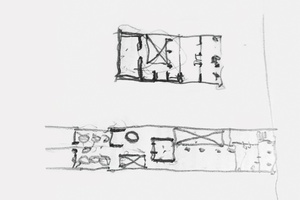
Much of the jury’s discussions are about boundaries. At a time when we are all questioning our environment and how we connect globally, India faces a shift in the ways its communities share. India is certainly connected. I don’t attempt to get through to the helpline to ease my travel concerns but India is all over the tech. Life, and no doubt cricket, is being followed on devices continuously: in rickshaws, at chai stops, on verandahs.
But this is a different type of connectivity and one which we understand well in the West. As American writer Bret Easton Ellis alludes, the problem with being connected remotely is that it adds a different kind of layer: one with separation.4 Doshi talks of this in a recent interview with Durganand. “If we look at our history, spaces like verandahs, inner courtyards, under the trees, pedestrian streets, plinths, and terraces were the spaces for community gatherings.”5 Connecting from behind boundary walls means something quite different.
Most houses, in fact, most buildings, we see in the awards are behind boundary walls: walls that, in encasing the perimeter, become increasingly tall, triumphant and stronger. By the time the live questioning and answering starts up, boundary concerns are in full swing. The walls are quite familiar to my eye, for we think little of them divvying up our cities.
As walls, many are indeed very beautiful: so, too, the spaces behind, with highly crafted finishes and, often, locally sourced materials. But walls are walls and, unless they have some of Baker’s outward thinking, these boundaries bring ‘haves’ and ‘have-nots’ as we are fast discovering in New Zealand. But this isn’t new to India, as Neelkanth Chhaya draws me the plans of traditional South Indian and Ahmedabad houses; it is a gift in beauty and meaning.
Indian houses traditionally layer from the street, through verandahs and public rooms to enable privacy within the house but also a contribution outwards. Chhaya’s plan isn’t hugely unlike Japanese spatial organisation, the ventilated breezeways I saw in Vietnam or, even, as we discuss, our Offset Shed House on the East Cape. Here, instead of looking to control a piece of the coast, as New Zealanders seem increasingly intent on doing, we set the house to contribute to a community that shares and meets at the foreshore. Chhaya notices our simple opening and closing of the plan to control privacy and the lack of fences. He and I speak the same language
and, with his drawing, come the questions to the presenting architects: “Do your clients not like their neighbours? Why are they hiding?”

It is polite but serious stuff. There are TV, newspapers, magazines and people, people, people. Discussions pull back to Doshi’s mantra that “life is intangible”. 6 Boundary walls are just not that conducive to communities helping each other, perhaps akin to adding traffic lights to prevent everybody from merging on the roads. Yet, despite India’s train moving, and some buildings clearly having left the station, Jaimini Mehta succinctly outlines in his address that architecture doesn’t just arrive, it evolves. There is a need to be scholarly, to reflect, to understand this changing of layers.
Consider Dezeen reporting a staggering 297 architecture schools opening in India in the last decade, and “about 558 institutions [now] offering degree courses.”7 There is no ‘about’ in tallying architecture schools in New Zealand: in fact, not even a tally. We have four, including AUT’s new school, which opened this year. That India is not sure of its numbers highlights Mehta’s point. Yet, as we were pleased to discover, many of the best projects were already testing boundary relationships.
The winning residential project, Matra Architects’ Kaleka House on the outskirts of Delhi, responds to a dual brief to house two artists without direct light by sculpting his and her houses. Each is seemingly devoid of windows and connection to the other or anybody else. Almost. The work of Verendra Wakhloo of Matra Architects is impeccably delivered, with its poured-in-situ walls, cabinetry and stepping levels providing light and shade but little in and out. It’s two very clever and beautiful concrete squash courts, which, during questioning, the architect suggests is perhaps as good as it gets if we follow this current boundary wall methodology. Not all houses will come with such skill and understanding; think of the other squash courts.
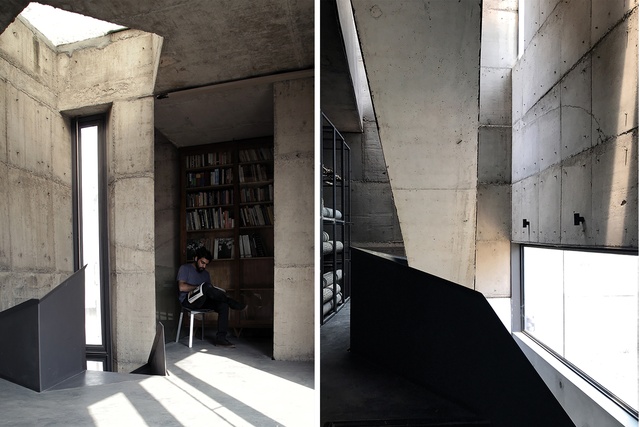
A house with an interest in boundaries also won the future project category, this time by dismantling walls pictorially into a garden. Cochin Creative Collective’s 1868 House presents a retake not just on the conservation of a traditional Kerala home, but on the artistic representation and colour that exists outwards. Lijo Mathew and Madhushitha Aravind’s collective combines designers across many fields in an interdisciplinary approach that clearly breaks down barriers rather than puts them up.
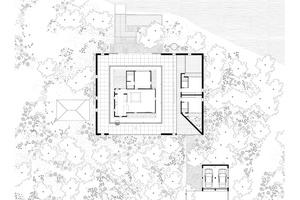
Whether collaging David Hockney or, perhaps, what might be the children’s illustrations of Satoru Onishi, their artistic representation belies the intricacy and care they show for the house and its upcoming fourth-generation inhabiters. There is no one singular image. These aren’t mere romantic images of the past, but provocations to an architectural experience enriched by both planned and accidental relationships already in the building. Layer in imagination and the unexpected, they suggest. Draw in beauty, learn, think again, look at what’s on the other side of your walls. Who knows what you’ll find?
This is all very heartening and thought-provoking. I’ve made wonderful friends and am ready to contribute. My name is announced and I head for the stage to give my keynote address in what is a very large and full auditorium… “but, first, we have a lucky draw of 10,000 rupees!” It’s one way to build enthusiasm and start the reflection. India teaches you many things: to wait, compassion, ventilation, hand-washing, pre-talk game shows, but also to learn. We need to be scholarly and reflect as we add more and more boundaries into our urban and rural landscapes; having so few trains and so many traffic lights is no excuse.
India makes you think; we should all go.
1 Jeremy Smith, ‘Essay from America’, Architecture New Zealand, July/August 2019,
pp. 42–46.
2 Durganand Balsavar, ‘I realise that life is intangible, says eminent architect B.V. Doshi’, The Hindu, 22 July 2017, thehindu.com/society/i-realise-that-life-is-intangible/article19325850.ece
3 The Japan Architect, JA81, Spring 2011.
4 Bret Easton Ellis, Writer Critic Lover Hater Tweeter Free Speaker Transgressive White Privileged Male, Picador, London, 2019.
5 Durganand Balsavar, “I realise that life is intangible, says eminent architect B.V. Doshi”, The Hindu Times, thehindu.com/society/i-realise-that-life-is-intangible/article19325850.ece, July 22, 2017.
6 Ibid.
7 Dezeen, 10 October 2019, dezeen.com/2019/10/18/indian-architecture-education-crisis/



